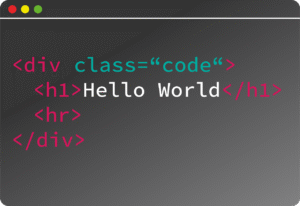☁️ What is Serverless Architecture?
Serverless architecture is a cloud-native design pattern where you write and deploy code without managing the underlying servers. Your app is split into small, event-driven functions that scale automatically and only run when triggered.
✅ “Serverless” doesn’t mean no servers — it means you don’t manage them.
🔧 How Serverless Works
You write functions (e.g.,
sendEmail,getUserData)Deploy to a cloud provider like AWS Lambda, Google Cloud Functions, Vercel, or Netlify
The provider:
Handles provisioning, scaling, patching
Executes your function on demand
Bills only for usage, not uptime
🚀 Key Benefits
| Feature | Description |
|---|---|
| 💸 Pay-as-you-go | Billed per invocation/memory/time |
| 📦 Auto-scaling | Handles thousands of concurrent requests automatically |
| 🔒 Zero server maintenance | No patching, provisioning, or scaling needed |
| ⚡ Fast time to market | Focus only on writing code |
| 🧩 Event-driven | Great for APIs, background jobs, file processing, etc. |
🧰 Popular Serverless Providers
| Provider | Service Name |
|---|---|
| 🟡 AWS | Lambda |
| 🔵 Google Cloud | Cloud Functions |
| 🟣 Azure | Azure Functions |
| 🟢 Vercel | Serverless Functions |
| 🟠 Netlify | Netlify Functions |
| 🟤 Cloudflare | Workers |
🧠 Common Use Cases
🔐 Authentication handlers
📤 File/image uploads & processing
📡 APIs (REST/GraphQL)
📧 Sending emails/SMS
🧮 Background tasks (ETL, data processing)
⏰ Scheduled jobs (CRON)
🛒 Payment processing hooks (Stripe, Razorpay)
🛠️ Example (AWS Lambda + API Gateway)
Lambda Function (Node.js):
exports.handler = async (event) => {
return {
statusCode: 200,
body: JSON.stringify({ message: "Hello from Lambda!" }),
};
};
Triggered by: HTTP request via API Gateway
⚖️ Pros vs. Cons
| ✅ Pros | ❌ Cons |
|---|---|
| No infrastructure management | Cold starts (on first request) |
| Auto-scaling | Harder to debug |
| Low cost for small/medium workloads | Stateful apps are complex |
| Built-in redundancy | Vendor lock-in risk |
| Fast deployment | Limited execution time (~15 mins on AWS) |
📦 Serverless vs Traditional Backend
| Feature | Serverless | Traditional Backend |
|---|---|---|
| Deployment | Per function | Full app |
| Scaling | Automatic | Manual or via autoscaling groups |
| Cost | Pay per execution | Pay for uptime |
| Architecture | Stateless | Stateful or hybrid |
| DevOps | Minimal | Required |
🔧 Popular Frameworks for Serverless Apps
| Framework | Description |
|---|---|
| 🧱 Serverless Framework | Works with AWS, Azure, Google, etc. |
| ⚡ Vercel | Perfect for Next.js and frontend hosting |
| 🔥 Firebase Functions | Great for mobile/web apps |
| 🔗 Netlify Functions | Great for JAMstack sites |
| 📦 Begin | Lightweight, for AWS Lambda |
| 🧪 Architect | Fast development with AWS Lambda |
📚 Resources to Learn More
✅ Summary
Great for: APIs, microservices, automation, backend tasks
Not ideal for: Long-running, stateful apps (e.g., video conferencing, game servers)
Best tool for JAMstack and modern scalable apps



































































































